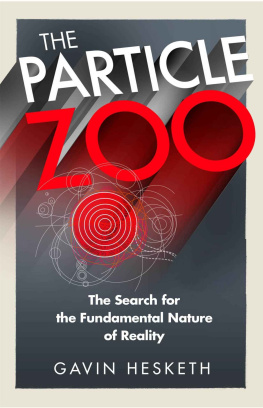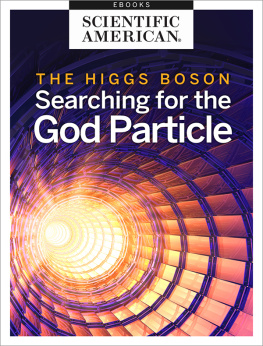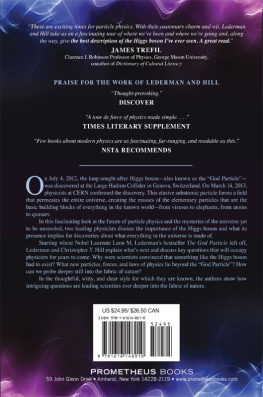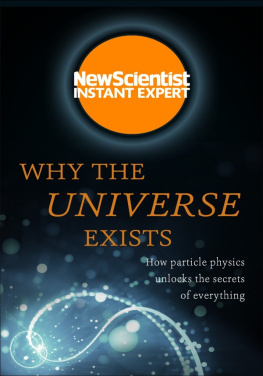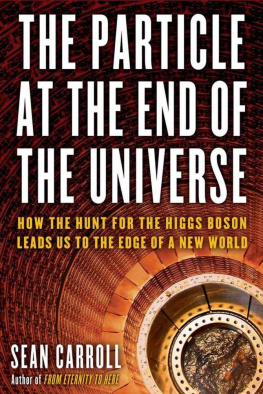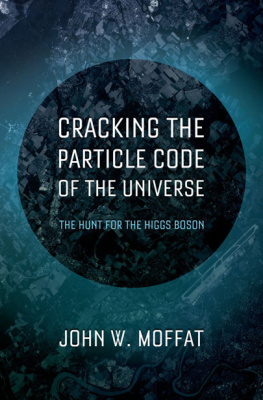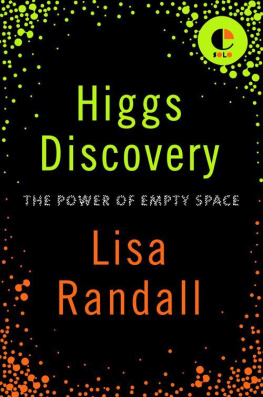The Particle Zoo

Title


Copyright
First published in Great Britain in 2016 by
Quercus Editions Ltd
Carmelite House
50 Victoria Embankment
London EC4Y 0DZ
An Hachette UK company
Copyright 2016 Gavin Hesketh
The moral right of Gavin Hesketh to be
identified as the author of this work has
been asserted in accordance with the
Copyright, Designs and Patents Act, 1988.
All rights reserved. No part of this publication
may be reproduced or transmitted in any form
or by any means, electronic or mechanical,
including photocopy, recording, or any
information storage and retrieval system,
without permission in writing from the publisher.
A CIP catalogue record for this book is available
from the British Library
HB ISBN 978 1 78429 867 8
TPB ISBN 978 1 78429 868 5
EBOOK ISBN 978 1 78429 869 2
Every effort has been made to contact copyright holders.
However, the publishers will be glad to rectify in future editions
any inadvertent omissions brought to their attention.
Quercus Editions Ltd hereby exclude all liability to the extent permitted
by law for any errors or omissions in this book and for any loss, damage
or expense (whether direct or indirect) suffered by a third party
relying on any information contained in this book.
Diagrams by Jeff Edwards
Diagram p. 183 CERN
Typeset by CC Book Production
You can find this and many other great books at:
quercusbooks.co.uk
Dedication
For my family
Contents
Authors Note and Acknowledgements
This book is about the universe on the smallest scales. And looking on those smallest of scales, everything seems to be made of the same stuff, the most fundamental things that we know: particles. The aim of this book is to give some idea of what these particles are, how they behave, where they might all have come from, and how we know all of this. The first thing to know about particles is that they dont behave like anything else in the universe, certainly unlike anything we experience in our day-to-day lives. This is part of what makes the world of subatomic particles so interesting, but it does present some challenges when describing them.
The main challenge is that the best language used in the field of particles is mathematics. So if you really want to understand particles, you would have to learn their language and that means maths. Having said that, I think the big ideas, the interesting concepts, can be separated from the equations and presented in everyday terms, and that is my aim with this book: to bring the subatomic world to life using analogies to more everyday things. But analogies are figurative, they have limits, and any failure of those youll find here is mine. The mathematics is usually right!
The other choice I had to make while writing was what to include. Particle physics has been around for over a century, with many thousands of brilliant people involved in that time and this provides a lot of material to draw on. This book contains an overview of the history, and some of the most exciting areas of research today, but it cannot be comprehensive. It is also a story of people, but here again I had to make a choice: when things are clearly history, and Nobel Prizes already acknowledge them, I have generally given the names of the people usually associated with each idea. But for current work the picture is less clear. To me it would seem to be unfair to pick out just one or two people responsible for discovering the Higgs boson, or for the theory of Super-Symmetry as we know it today. Science has always been collaborative, and nowhere is this more true than in particle physics both on the experimental side and on the theoretical side. So rather than get bogged down in lists of names, I have decided to focus just on the big ideas in play in active areas of research.
It would also be impossible for me to thank everyone who has been involved in this book. Ive really been developing these ideas throughout my research career, so everyone Ive worked with, and everyone Ive spoken to about the Higgs boson down the pub, has played a role. Having said that, the process of actually writing all this down is a different skill altogether, so Id like to thank my editor, Wayne Davies, for suggesting this whole thing, and Erica, without whose love and support this almost certainly wouldnt have come together.
The Standard Model of particle physics

1: The Fundamental Nature of Reality
Beauty is perhaps a strange word to use when describing science, not least because it is so hard to define. But we know it when we see it, and I was seventeen when I first saw the beauty in physics. The way certain ideas draw an unexpected connection between two seemingly different topics. How particular concepts appear over and over again. And how all of this can be expressed in a few simple yet powerful equations. When studying these ideas, it is hard not to feel that we can touch, even for just a moment, a deeper truth about the world around us.
The history of these ideas is a history of human creativity and imagination in discovering them as well as of culture and politics, errors and luck, dead ends and breakthroughs. But the beauty of science is that it can also transcend this: a single equation really can tell us something about the universe that is as true today as it has been for billions of years, and can also tell us what will happen billions of years in the future.
But this story is not finished, and the future of science is about continuing to make sense of the world around us. Particle physics is perhaps the most extreme form of this quest, trying to understand the universe by studying the smallest things in it: the fundamental particles. The smallest pieces of matter. The basic building blocks that make up you, me, and the whole world. The same particles that form the Sun, our entire galaxy and the billions of other galaxies, and have existed for almost the entire history of the universe.
This book is about those particles. Its about what they are, how they behave, and the possibilities that exist in the world around us. But it is also about where all these particles came from, how everything began, and how it might end. These are some of the biggest questions we can ask, and the search for answers has revealed a universe that is far stranger than we could have imagined. This is the story of what we know, of what we dont, and of our quest to learn more. It is the story of quarks and leptons, of bosons and symmetries, and of the biggest experiment in history studying the smallest things that we have discovered up to this moment.
Experiments really play a crucial role in this story. Only by measuring the universe can we understand it, and the experiments Ill describe vary from the biggest, the Large Hadron Collider, a huge 27-km particle accelerator studying the most extreme conditions ever created in a laboratory, to some of the less famous, like a giant tank of dry-cleaning fluid down a mine in South Dakota which studied the heart of the Sun. Over a century of investigation has revealed an entire zoo of exotic particles, and led to the most successful scientific theory ever developed: the Standard Model. This theory describes how particles behave, how they interact, and explains everything from how atoms form to how the Sun burns, and the way these particles shape the world around us. The Standard Model has also predicted the result of every experimental test we have so far been able to devise the real sign of scientific success.
Next page
